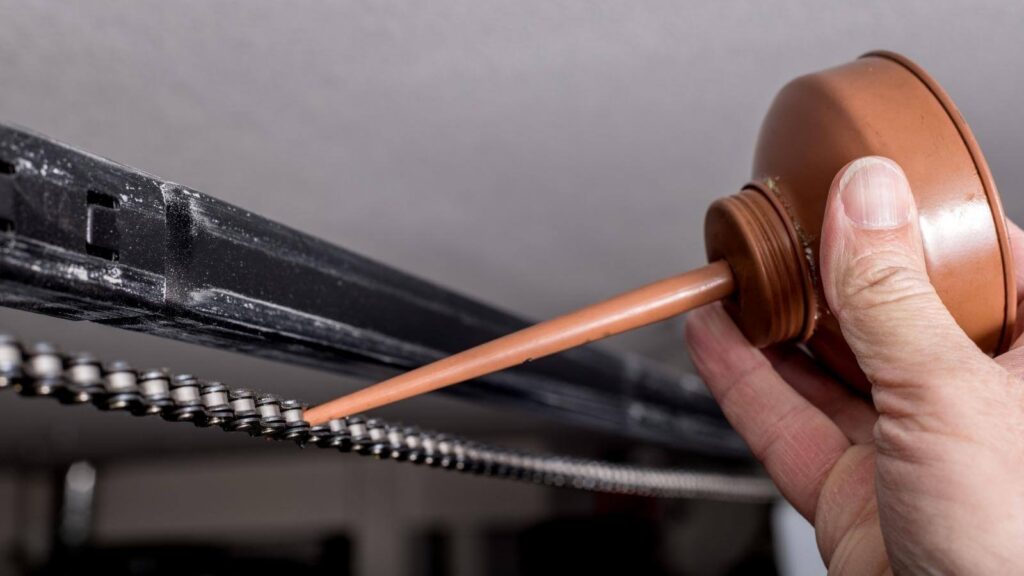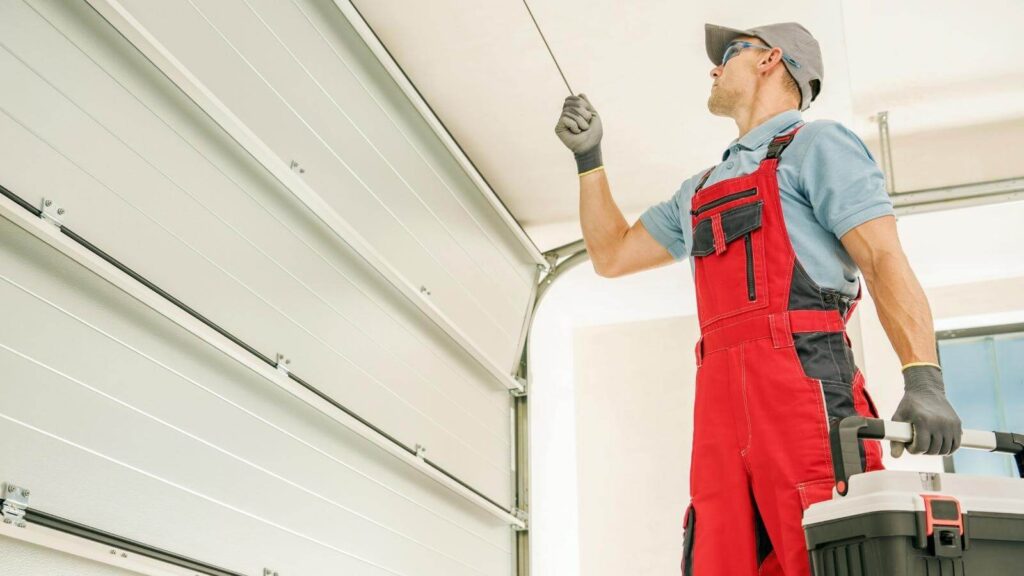Has your garage door been squeaking, stiff, or making a lot of extra noise? This is a common garage door issue that is fairly simple to fix. Regular maintenance is essential to ensure your door operates smoothly and quietly. One crucial aspect of garage door maintenance is lubrication.
In this step-by-step guide, we’ll walk you through lubricating your garage door to keep it in excellent working condition. We’ll also provide other tips if this doesn’t fix the issue.
Materials You’ll Need:
- Silicone-based garage door lubricant or lithium-based grease
- Clean cloth or rag
- Ladder
- Safety goggles and gloves
Steps to Lubricate Garage Door
- Prepare Your Workspace: Before you begin, make sure to disconnect your garage door opener from the power source. This step is crucial for your safety. Wear safety goggles and gloves to protect your eyes and hands while working.
- Clean the Tracks and Rollers: Start by inspecting the garage door tracks and rollers. Use a clean cloth or rag to remove any dirt, debris, or old lubricant that may have accumulated over time. Clean tracks and rollers ensure smooth movement.
- Inspect the Hardware: Take a close look at all the nuts, bolts, and screws on the garage door and its hardware. If you notice any loose or damaged parts, tighten them or replace them as needed.
- Choose the Right Lubricant: Select a high-quality silicone-based garage door lubricant or lithium-based grease. Avoid using WD-40 or other penetrating oils, as they can attract more dust and debris over time.
- Lubricate Everything:
- Rollers: Apply the lubricant to the rollers at each end of the garage door. Be sure to apply it generously to ensure smooth rolling. Roll the door up and down a few times to distribute the lubricant evenly.
- Hinges: Next, apply lubricant to all the hinges on the garage door. Open and close the door a few times to help the lubricant penetrate the hinge joints effectively.
- Springs: Carefully lubricate the torsion or extension springs located above the door. Use caution while doing this step, as the springs are under tension. Apply a light coating of lubricant to both sides of each spring.
- Tracks: Apply lubricant to the inside of the garage door tracks. Make sure to cover the entire length of the track. Use a ladder if needed to reach high areas, but please use caution or get assistance.
- Test the Door: After lubricating all the necessary parts, test your garage door to ensure it moves smoothly and quietly. If it still feels stiff or noisy, you may need to repeat the lubrication process in certain areas.
- Reconnect the Opener: Finally, reconnect your garage door opener to the power source. Test the door again using the opener to make sure it operates properly.
What if Lubricating Doesn’t Help?
If lubricating the garage door parts doesn’t resolve the issues you’re experiencing, it’s important to take further steps to address the problem. Here are some troubleshooting tips to consider:
- Inspect for Damaged or Worn Parts: Carefully inspect all components of your garage door system, including springs, cables, rollers, tracks, and hinges. Look for signs of wear, rust, or damage. If you find any damaged parts, they may need to be replaced.
- Check the Balance: Ensure that your garage door is properly balanced. Disconnect the opener and manually lift the door halfway. It should stay in place. If it doesn’t, the springs may need adjustment or replacement. Balancing the door is crucial for its smooth operation.
- Track Alignment: Make sure the tracks are aligned properly. Misaligned tracks can cause the door to bind or make noise during operation. Use a level to check if the tracks are plumb and adjust them as needed.
- Replace Worn Rollers: If the rollers are old, worn, or damaged, they may need to be replaced. Nylon rollers are quieter than metal ones and may provide smoother operation.
- Consider a Garage Door Upgrade: If your garage door is old and experiencing multiple issues, it may be worth considering a replacement. Newer doors are often more energy-efficient, and secure, and come with quieter openers.
Consult a Professional
If you’ve tried all of the above steps and still experience issues with your garage door, it’s advisable to contact a professional garage door technician. They have the expertise and tools to diagnose and fix more complex problems.
Able-Luebke Overhead Doors can provide all your garage door service needs! From broken springs to noisy operation or complete garage door replacement, we do it all. Contact us today to keep your garage door running smoothly!


